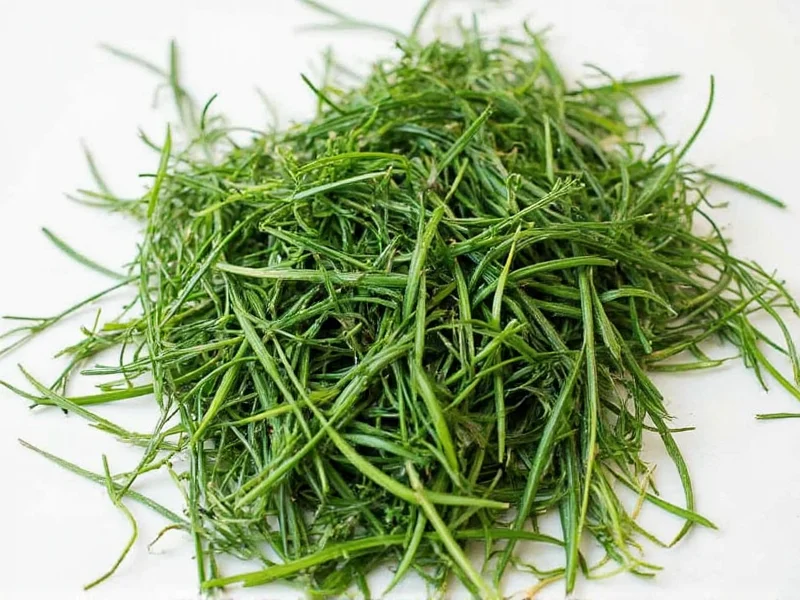Understanding how to properly convert fresh dill to dried measurements is essential for maintaining recipe integrity. Many home cooks struggle with herb substitutions, leading to dishes that are either under-seasoned or overpowering. This comprehensive guide explains not just the conversion ratio, but the science behind it and practical methods for drying your own dill.
Why Fresh and Dried Dill Aren't Interchangeable 1:1
Fresh dill contains approximately 85-90% water, while dried dill has most of this moisture removed. This dehydration process concentrates the essential oils and flavor compounds, making dried dill significantly more potent. The 3:1 conversion ratio accounts for this concentration difference, ensuring your recipes maintain balanced flavor profiles.
Scientific Basis for the Conversion Ratio
Research in food science confirms that drying herbs typically increases flavor concentration by 200-300%. A study published in the Journal of Food Science found that dill's key flavor compound, carvone, becomes three times more concentrated after proper drying. This scientific basis validates the standard culinary conversion ratio used by professional chefs worldwide.
| Measurement | Fresh Dill | Dried Dill |
|---|---|---|
| Teaspoon | 3 tsp | 1 tsp |
| Tablespoon | 1 tbsp | 1 tsp |
| Cup | 3/4 cup | 1/4 cup |
| Stem Measurement | 1 large sprig | 1/4 tsp |
Proper Methods for Drying Fresh Dill at Home
Drying your own dill preserves peak flavor better than store-bought dried versions. Commercial products often lose potency during transportation and shelf storage. Home-dried dill maintains superior flavor when processed correctly.
Air Drying Method (Best for Flavor Preservation)
This traditional method preserves the most flavor compounds:
- Harvest dill in the morning after dew evaporates
- Gently wash and pat completely dry
- Bundle 5-6 stems together with twine
- Hang upside down in a dark, warm (70-80°F), well-ventilated space
- Wait 1-2 weeks until completely dry and crumbly
- Store in airtight containers away from light
Oven Drying Method (Faster Alternative)
For those needing quicker results:
- Preheat oven to lowest possible setting (150-170°F)
- Spread dill in single layer on parchment-lined baking sheet
- Place in oven with door slightly ajar
- Dry for 2-4 hours, checking frequently
- Remove when leaves crumble easily
- Cool completely before storing
Dehydrator Method (Most Consistent Results)
Using a food dehydrator provides precise temperature control:
- Set dehydrator to 95°F (35°C)
- Arrange dill in single layer on trays
- Dry for 4-8 hours until brittle
- Check periodically to prevent over-drying
- Store in glass containers with tight lids
Common Mistakes When Converting Fresh Dill to Dried
Many home cooks make these critical errors when substituting dill forms:
- Using equal measurements instead of the proper 3:1 ratio
- Adding dried dill too early in cooking (add in last 10-15 minutes)
- Storing dried dill in clear containers (light degrades flavor)
- Using old dried dill (loses potency after 6-12 months)
- Not properly crushing dried dill before use (releases essential oils)
When to Adjust the Standard Conversion Ratio
While 3:1 is the standard fresh dill to dried dill ratio for cooking, certain situations warrant adjustments:
- Delicate dishes: Use 2.5:1 ratio for fish or egg dishes where dill should be subtle
- Long-cooking recipes: Increase dried dill by 25% for soups/stews that cook over 2 hours
- Older dried dill: If your dried dill is 6+ months old, increase by 15-20% for equivalent flavor
- Personal preference: Adjust within 10% based on your taste preferences
Measuring Dried Dill Accurately
Precision matters when converting fresh dill to dried measurements. Follow these tips:
- Always use measuring spoons, not eyeballing
- Crush dried dill between fingers before measuring
- Level off measurements with a straight edge
- Store measuring spoons separately from spices to prevent cross-contamination
- Consider investing in a small kitchen scale for critical recipes
Storing Homemade Dried Dill Properly
Proper storage maintains the conversion ratio's effectiveness by preserving potency:
- Use dark glass or opaque containers (light degrades flavor compounds)
- Store in cool, dark place (ideal temperature: 60-70°F)
- Include silica gel packets to absorb moisture
- Label containers with drying date
- For maximum potency, use within 6 months
Testing Dried Dill Potency Before Use
Before substituting dried for fresh dill in important recipes, test potency:
- Crush a small amount (1/4 tsp) in your palm
- Rub hands together and smell
- Strong, clear dill aroma = full potency (use standard ratio)
- Faint aroma = reduced potency (increase amount by 15-25%)
- No aroma = replace with fresh product
Using Dried Dill in Specific Recipe Types
Different cuisines and dishes require nuanced approaches when converting fresh dill to dried:
- Pickling: Use 2:1 ratio as vinegar extracts more flavor
- Baking: Increase dried dill by 10% as heat diminishes flavor
- Cold dishes: Use 3.5:1 ratio as cold temperatures mute flavors
- Marinades: Use same 3:1 ratio but add 15 minutes earlier than fresh











 浙公网安备
33010002000092号
浙公网安备
33010002000092号 浙B2-20120091-4
浙B2-20120091-4